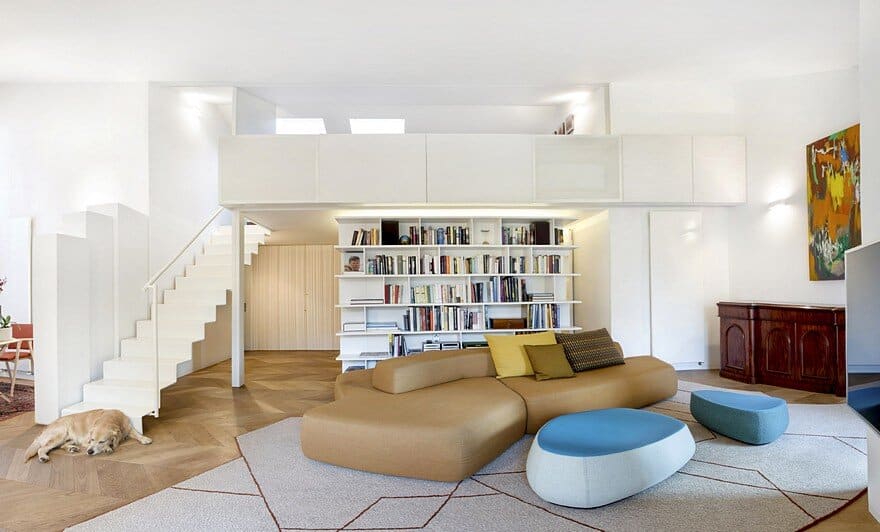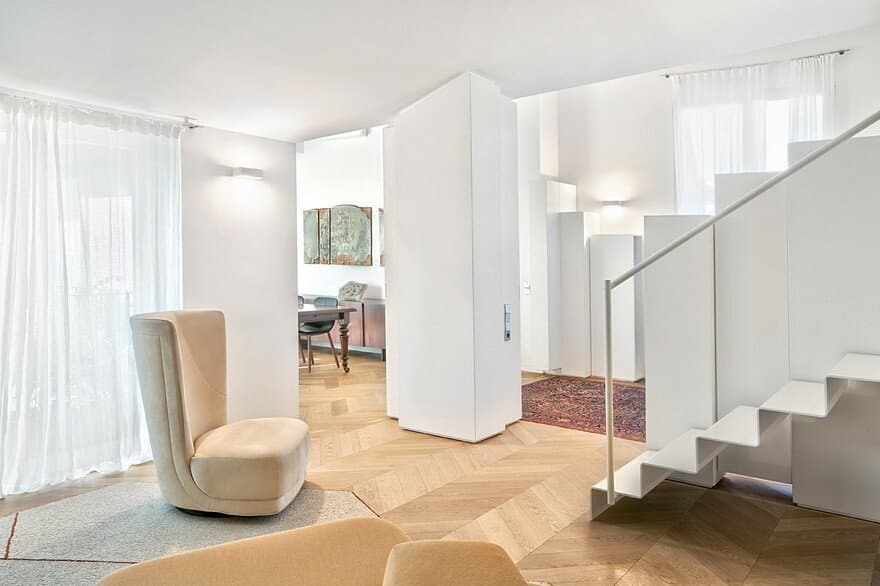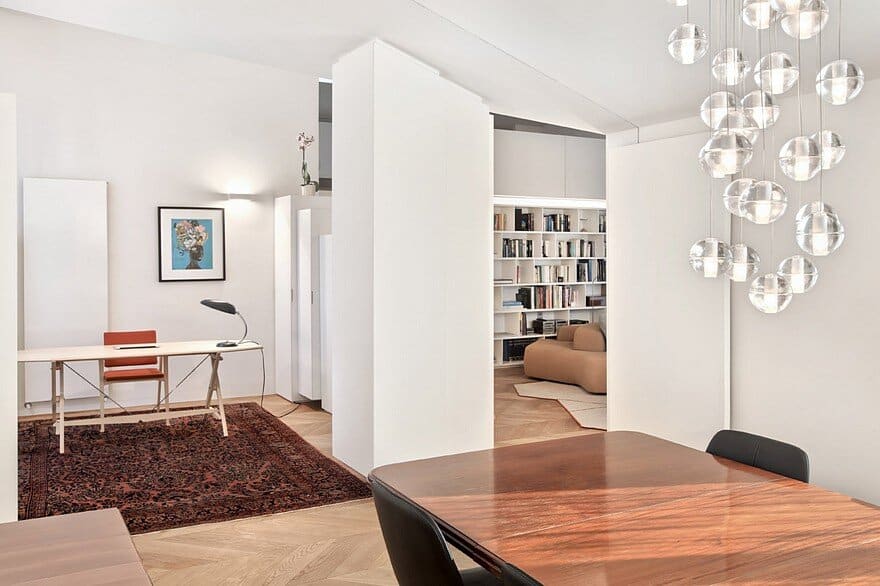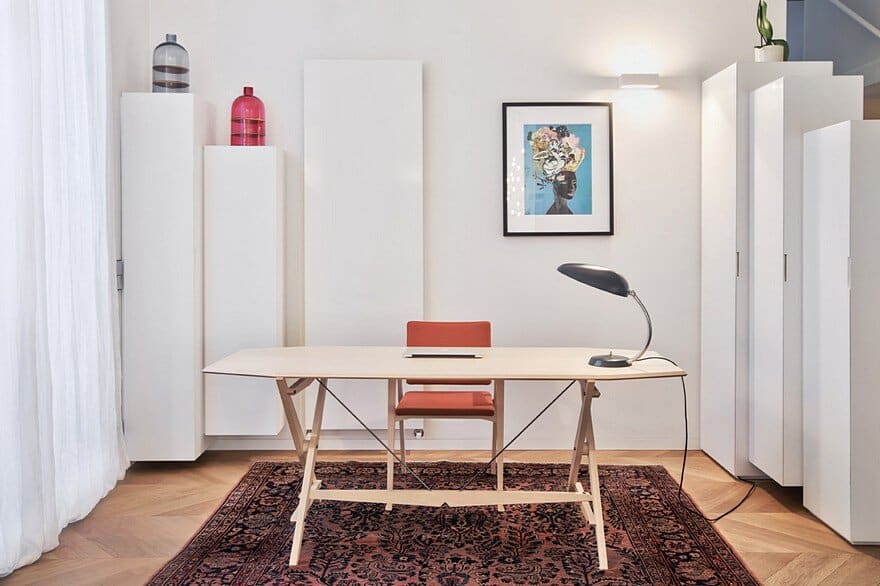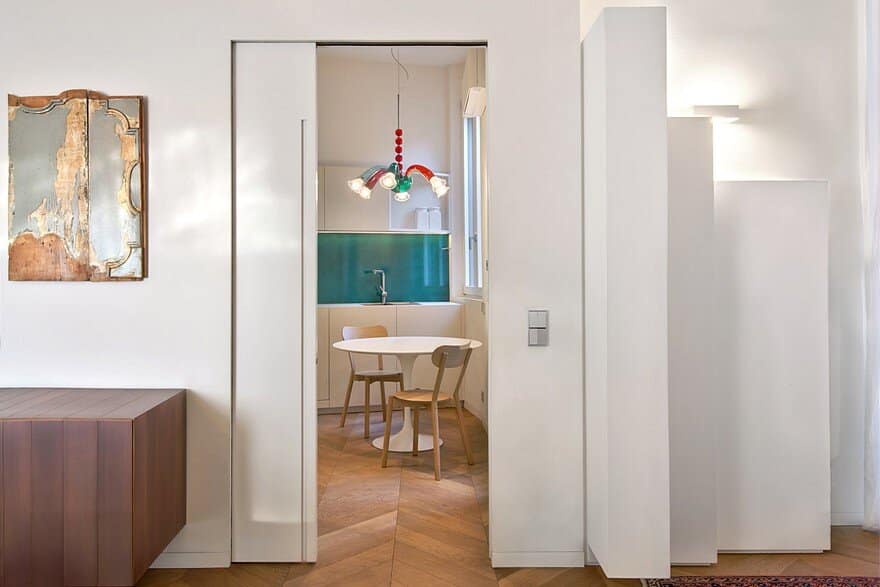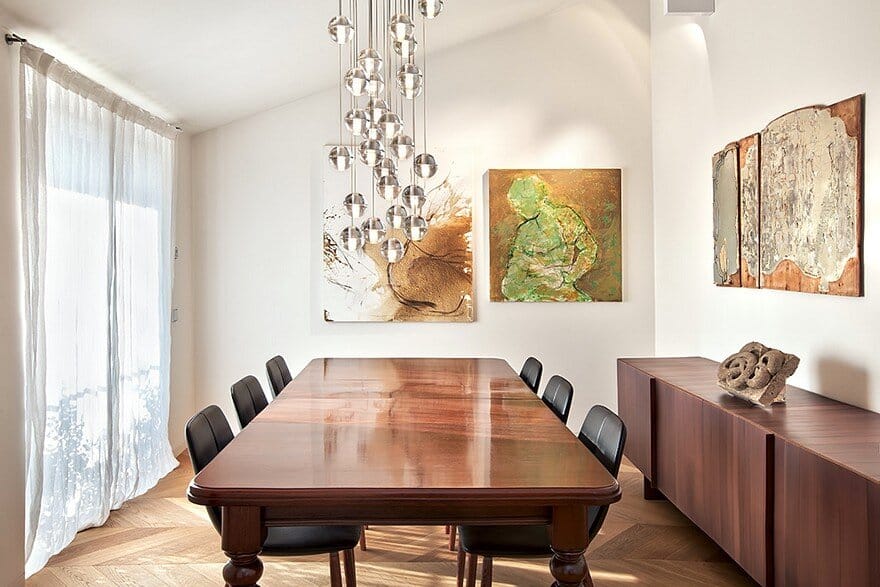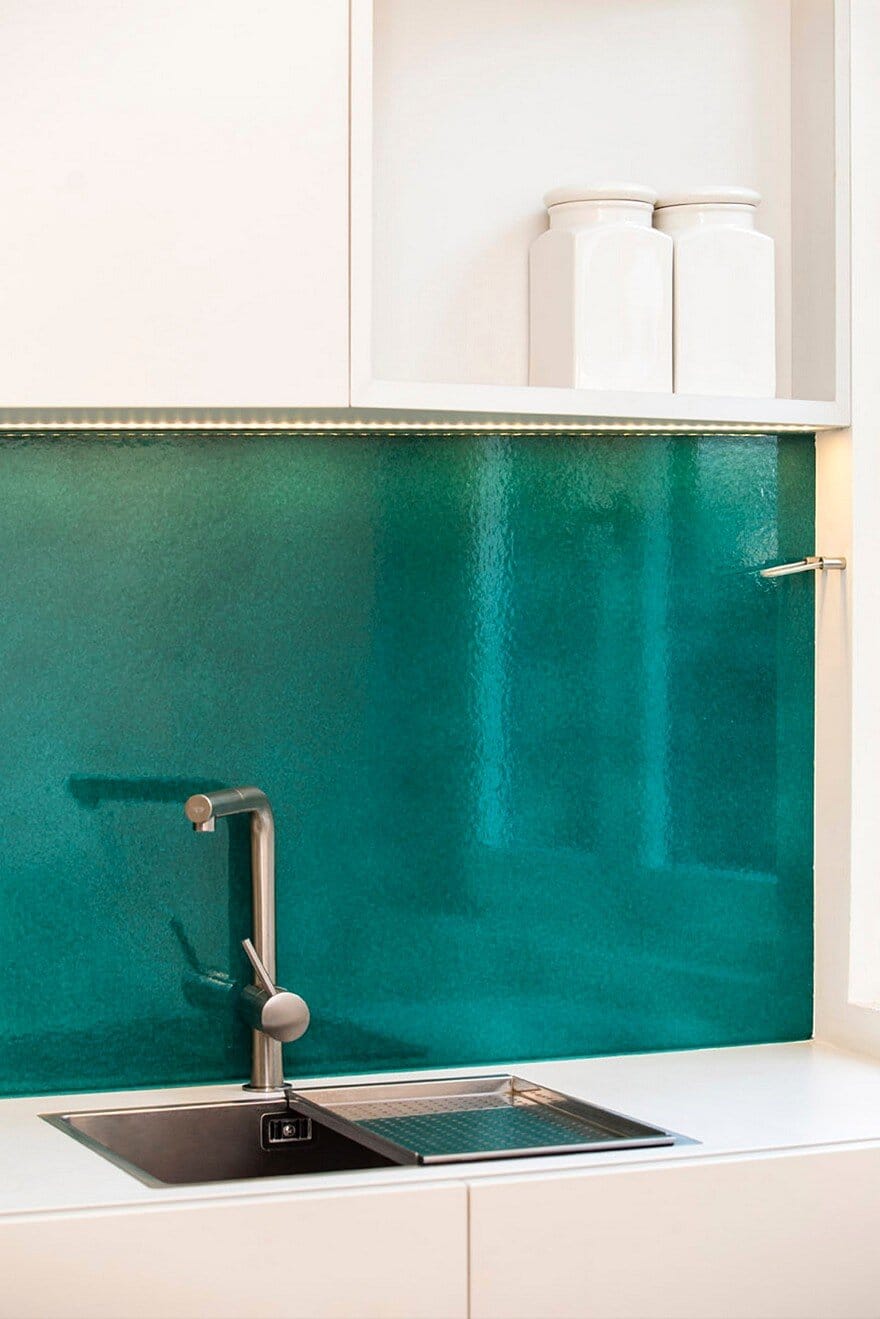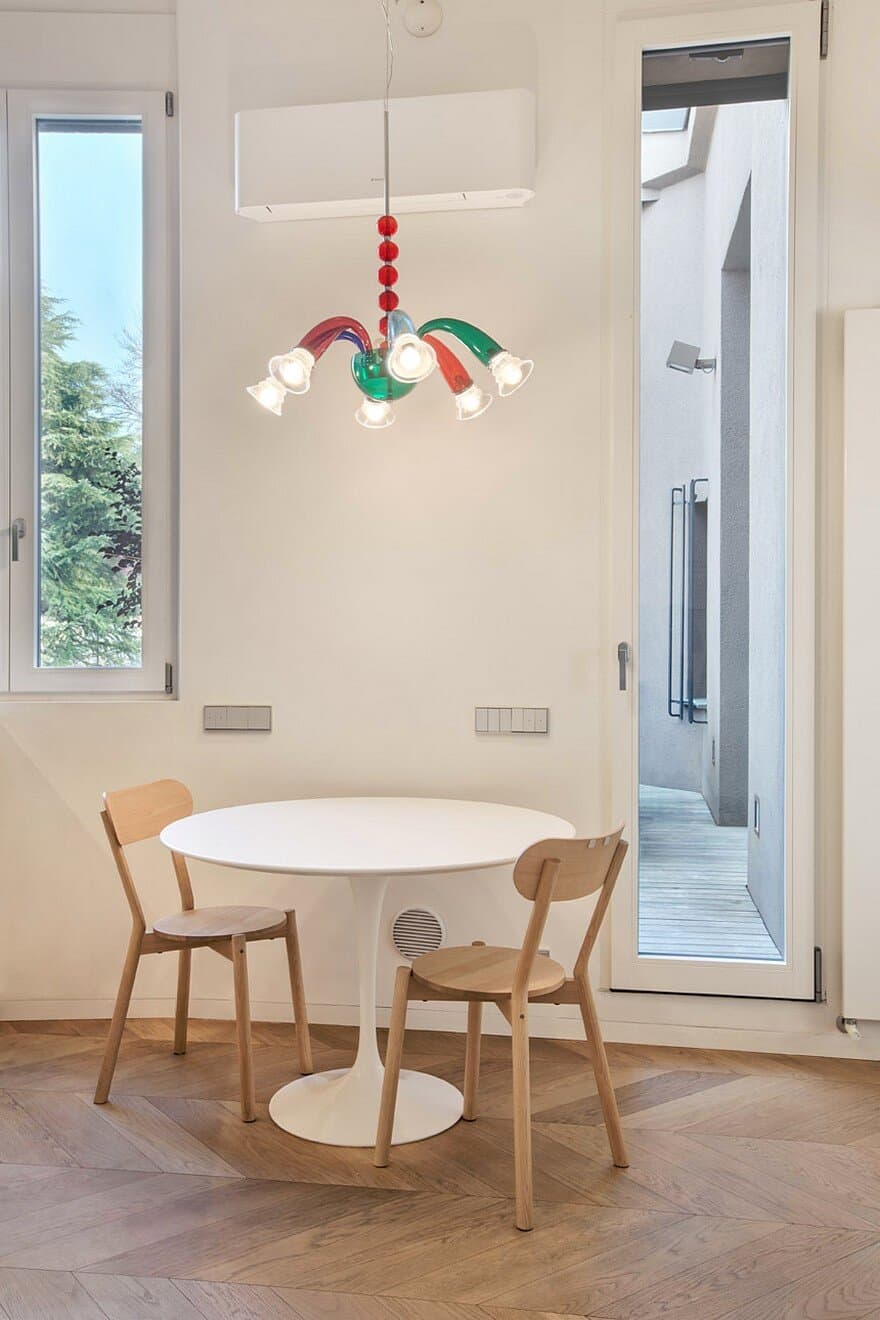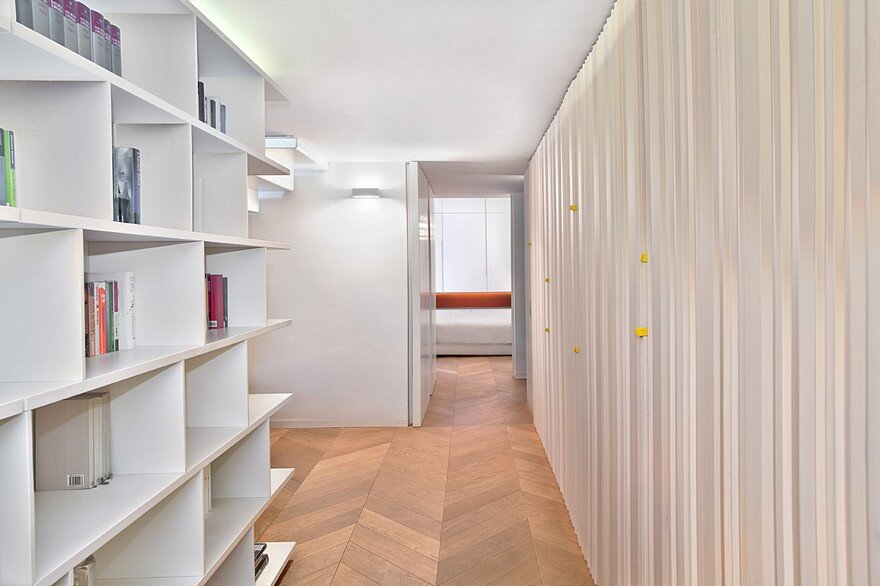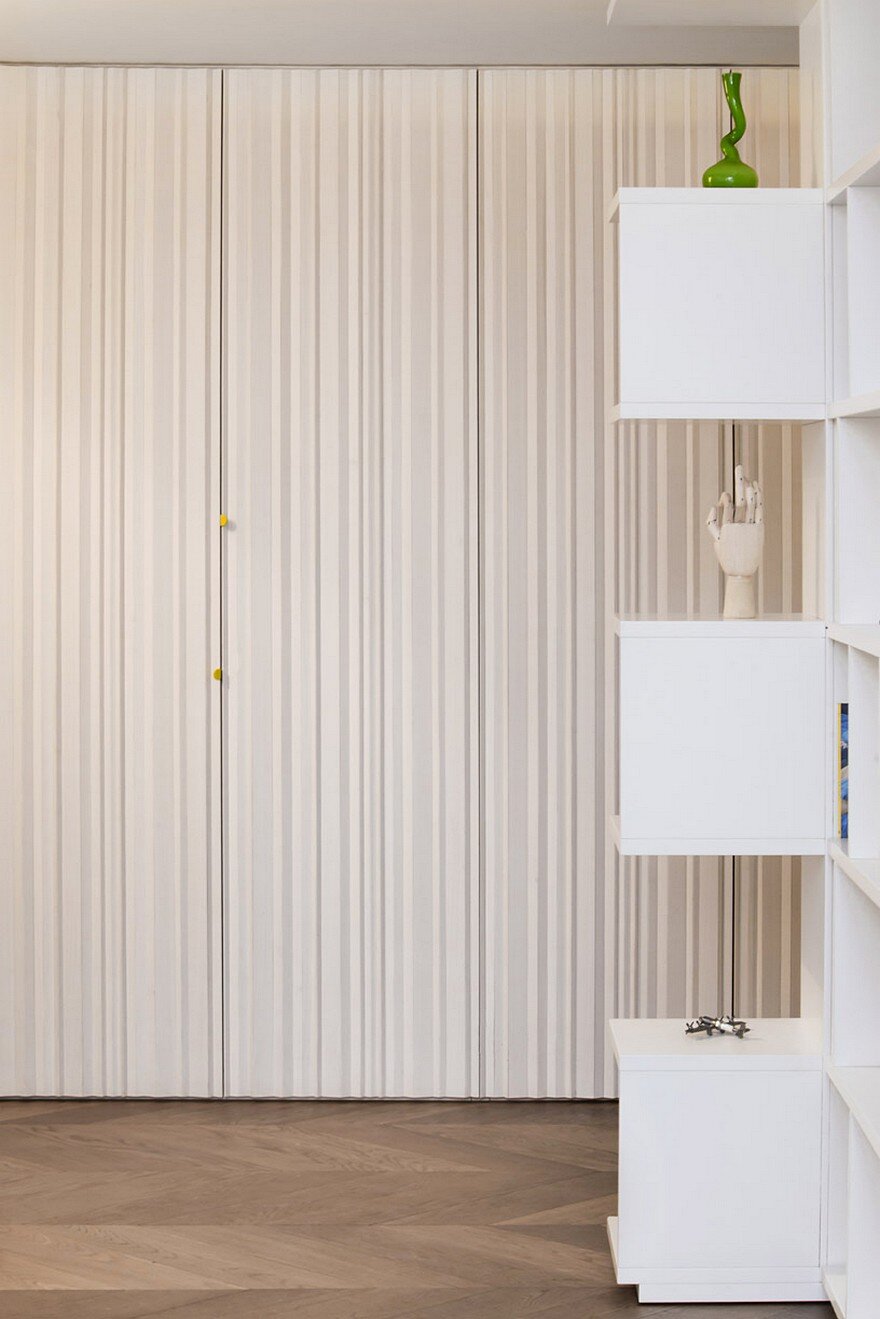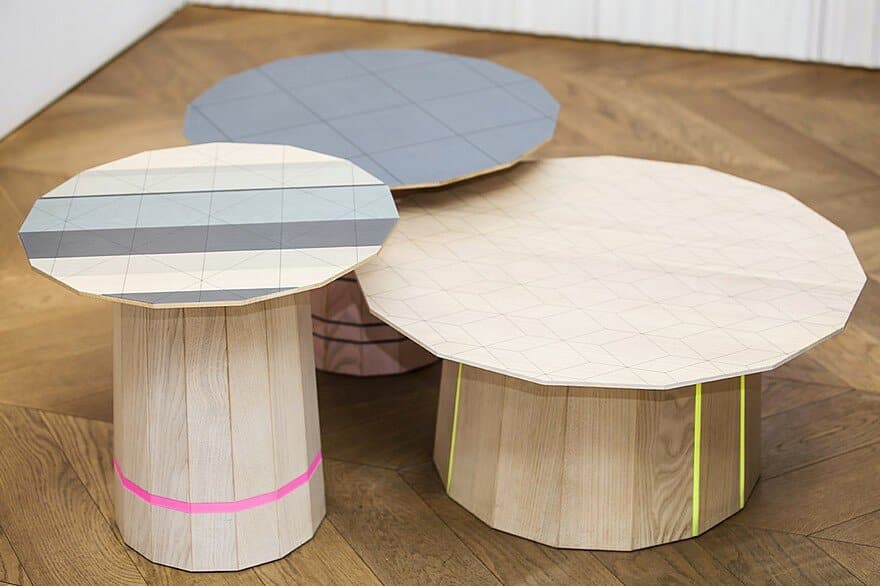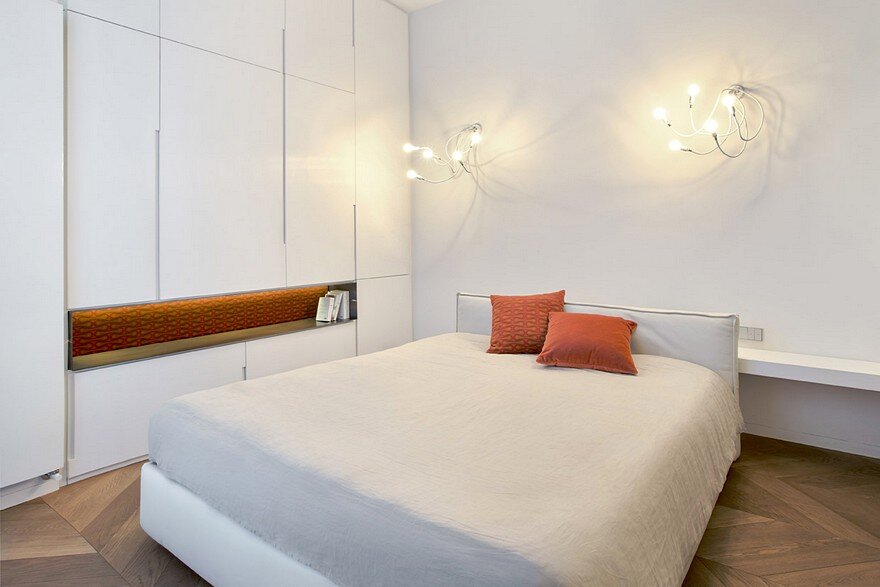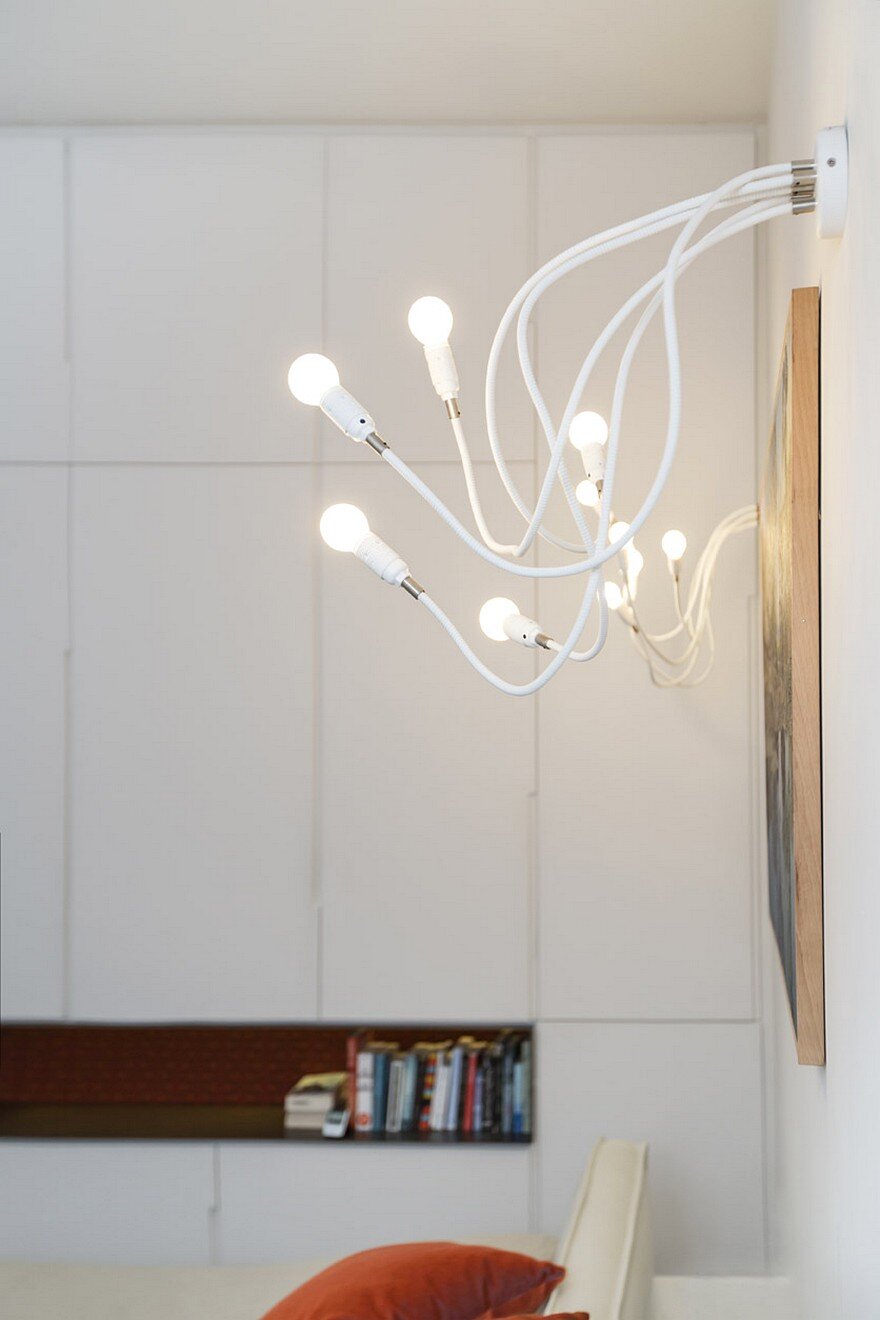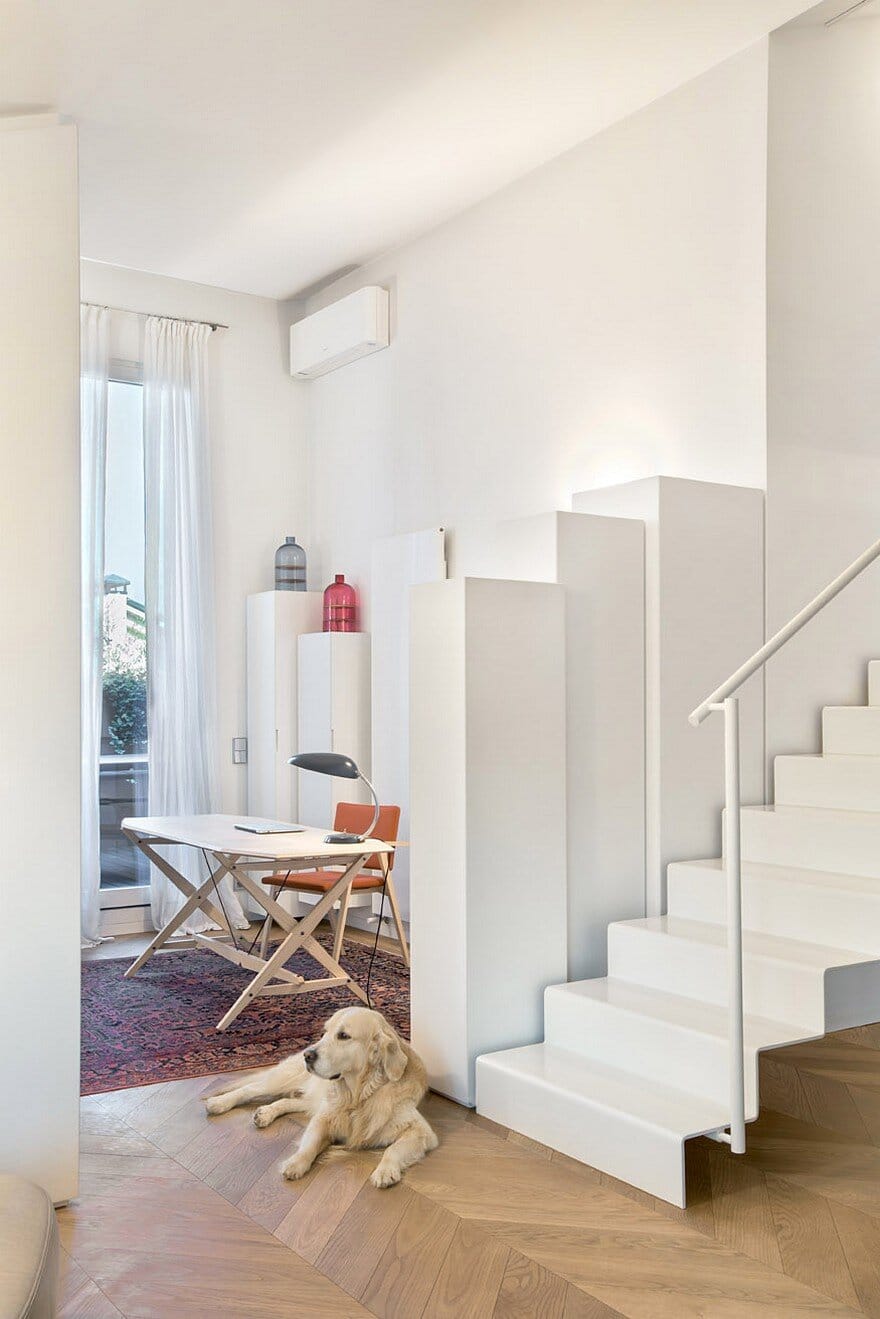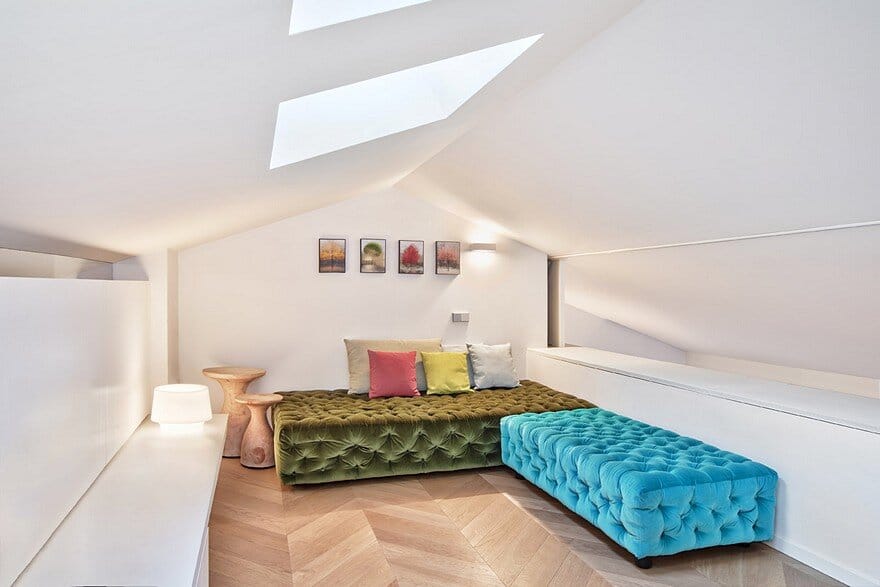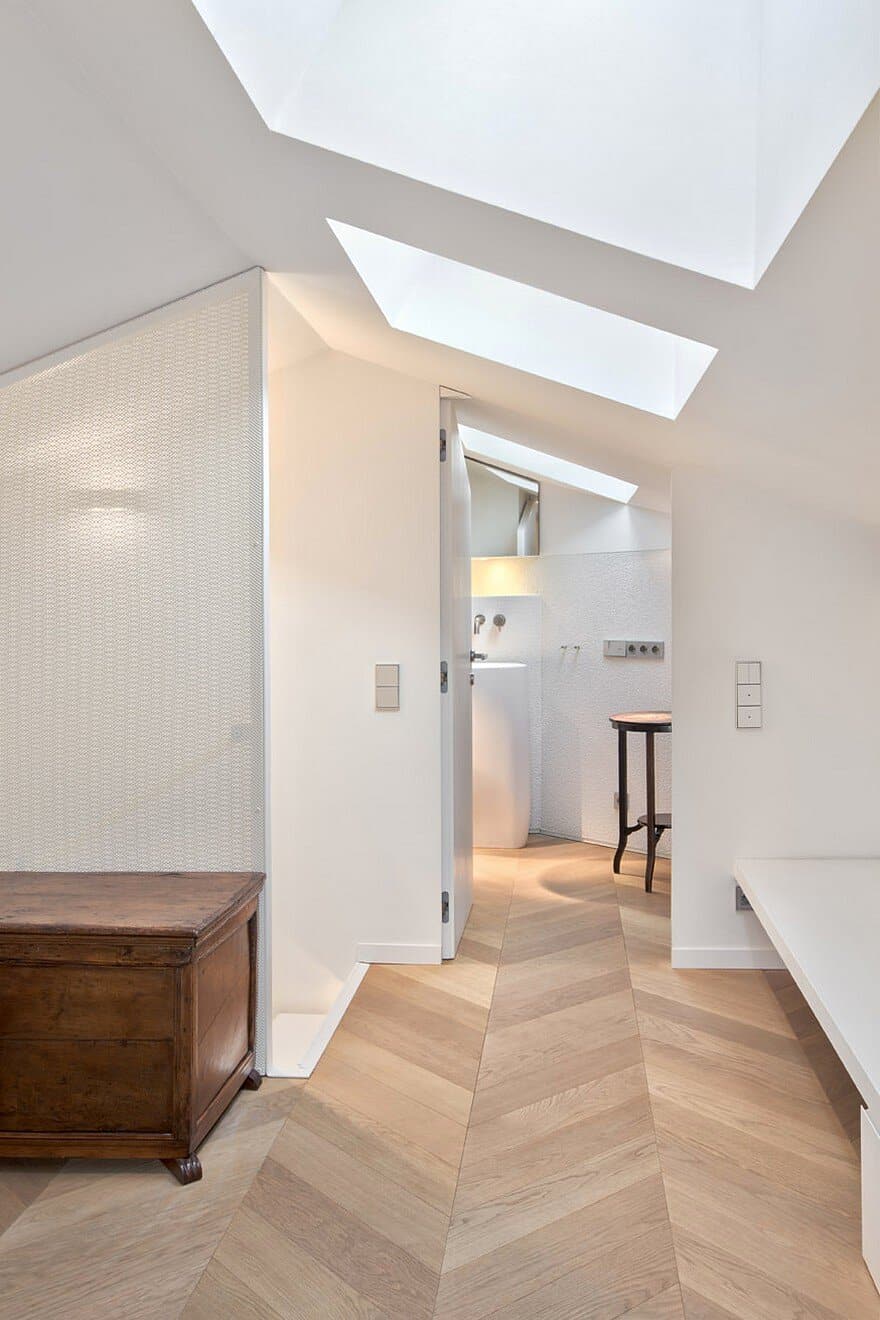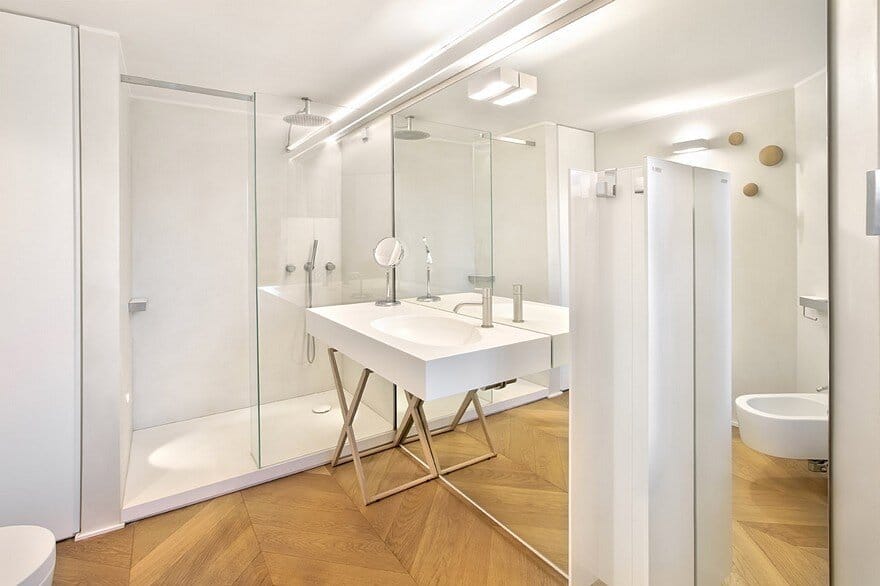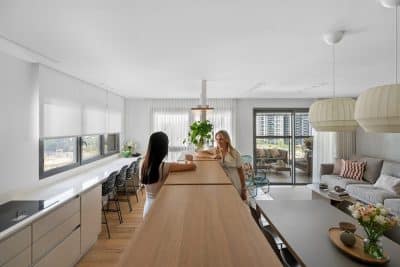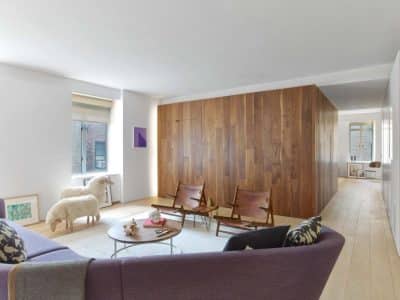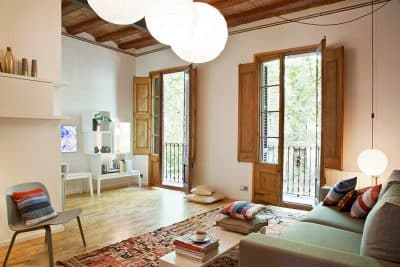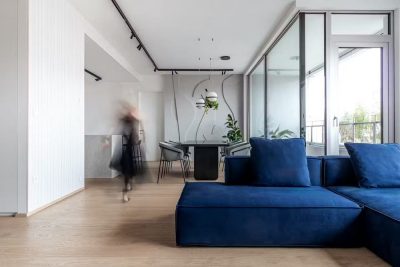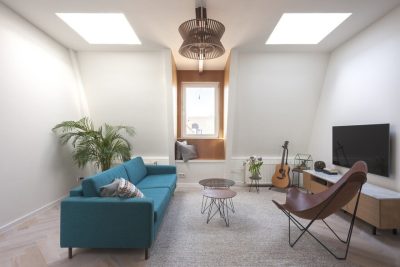Designer: Bartoli Design
Project: 210 sqm Apartment Renewal
Project Team: Arch. Carlo Bartoli, Arch. Anna Bartoli, Arch. Paolo Bartoli
Location: Brianza, Italy
Area: 210 sqm
Photography: Diana Lapin
Quite a radical renovation, Bartoli Design’s project for a couple with two teenagers that moved to Brianza, in a 210 sqm apartment placed on the top floor of a building from the 80’s. The customers asked for the same level of comfort of their previous, more spacious home, with space for family’s valuable pieces of furniture, too.
Design-passioned, lovers of sport and relaxed lifestyle, the couple was looking for a luminous living arrangement that would enhance their family well-being. This was not the impression the architects got when visiting the apartment for the first time: a maze-like plan with many little spaces and – in the middle – an enclosed staircase that brought to a dark upper mezzanine. Reality was that this space had great potential as an apartment surrounded by a charming green area, with windows on four sides and a multiple-angled leaning roof.
Bartoli Design drew a new plan and configuration with spaces opening one on the other: the internal walls and the old mezzanine have been demolished, the kitchen has been moved to other side of the apartment, the corridors have been replaced by few sliding or pivoting parting panels that go hiding into the walls when not in use. Therefore, during the day, the line of sight from the entrance to the master bedroom is unobstructed, and, from open doors, light spills in the spaces.
Another complex part of the job has been the renovation of all technical facilities in the meager thickness available in floors and walls.
Between living and sleeping areas, a new mezzanine has been built, with a light metal structure as access, thought as a cocooned relax space for the children that is visually open onto the living room. The iconic Michetta velvet seatings by Gaetano Pesce furnish the space that occasionally becomes the guest room, thanks to sliding blackout curtains. In this area there’s also a small bathroom (equipped with bathtub, shower, wc and washbasin) finished with materials that remind of a snow-covered forest, to “mirror nature”, as required by the clients.
From the mezzanine, looking down, you can see the lozenge-shaped wool rug in the living room, designed by Bartoli and custom manufactured by Kasthall for the clients. In the middle of the living, a multifaceted sofa has been placed, to be used on its different sides. Under the white lacquered metal staircase that takes you from the mezzanine to the living, the graphics of the Colour Wood small tables by Karimoku dialogue with the wooden floor geometries.
The living room opens on the studio and dining areas: the space is articulated and separated thanks to white boxy containers that also run by the side of the staircase. Design furniture pieces from the ‘50s, like the Cavalletto desk and the Luisa armchair designed by Franco Albini, and antique furniture coming from England, live side by side with contemporary furniture: the By leather chairs manufactured by Bonaldo, the Stars burnished brushed copper-clad cupboard by Laurameroni, both Bartoli’s design, and the suspended luminaire with pressed glass globes, manufactured by Bocci, which lets you catch a glimpse of the two acrylic and charcoal paintings by Elena Pozzi, set on the background. From here, the sliding door takes you to the kitchen, custom designed in white Kerlite and turquoise-enameled lava stone; in front of the kitchen counter, a classic Saarinen table, some Karimoku oak chairs and the Ducale blown glass suspended luminaire by Artemide, a beloved piece of furniture from the previous home.
The teenagers sleeping area has been designed with custom closets, characterized by rock climbing holds used as handles, with SheLf sculptural hanging bookcase that was initially a one-off piece, now produced by Kristalia, and some Joko chairs designed by the architects and manufactured by the same company, all by the side of a Milano table on castors, designed by Bartoli for Sagsa.
The clients have chosen to reduce private areas in favour of public spaces, but for the master bedroom the architects have designed a full sized cabinet, with enhanced depth, that covers the whole wall and features a recess finished in bronzed brass with an orange fabric back, a 1913’s design by Josef Hoffmann, that is a visual background as soon as you enter the apartment even before getting to the bedroom. A long shelf runs behind the bed leather headboard; above you’ll find the floating arms of two Turciù lamps by Catellani&Smith, in contrast with the rigorous lines of
other pieces of furniture.
In the bathroom, with direct access from the master bedroom, the reduced space is visually expanded thanks to a big mirror with a Corian hanging washbasin manufactured by Antonio Lupi, as for the shower system placed in a niche; a flush-mounted container unit completes the furniture. The Link wc and bidet by Flaminia and the Serie T radiator by Antrax with clothes hanger, are also suspended. The floor is the same oak wood parquet as the whole apartment.
Many dividers are custom designed as pieces of furniture by the architects: this way a new volume has been created under the mezzanine – filtering the view towards the entrance – with bookcases enveloping the four sides of the box containing a wardrobe, accessible from the entrance area by sliding a half bookcase wall. In front of it, a five meter long cabinet also acts as acoustic insulator between entrance and the son’s bedroom, thanks to its thickness. The entrance area is therefore a storage space defined by its tridimensional wood surface, that vibrates when hit by the light.
”The Client’s love for nature inspired us to translate the irregularities of natural elements – like tree trunks or snow – into geometric surfaces; that’s how the design of the wood texture for the long entrance cabinet was born and the grès micro-mosaic wall finishing for the guest bathroom was chosen”, the architects say.
The white colour prevails, developed in a palette of shades and sophisticated finishes: walls are decorated with clay paint, giving depth and transparency; furniture pieces are finished with hand-brushed lacquers, and looking close you can see thin filaments of reflected light; the wood surface of the entrance cabinet is white aniline dyed, revealing the wood texture.
The white colour is matched with natural materials: oak wood for the floor parquet, oil-finished and laid down with Hungarian herringbone geometry; micro-granulated cork is used to cover two walls in the children’s bedrooms in order to make them sound proofed.
When the work was done, the most rewarding comment came from the client, declaring “…living in the new house I feel like being on holiday!”.

